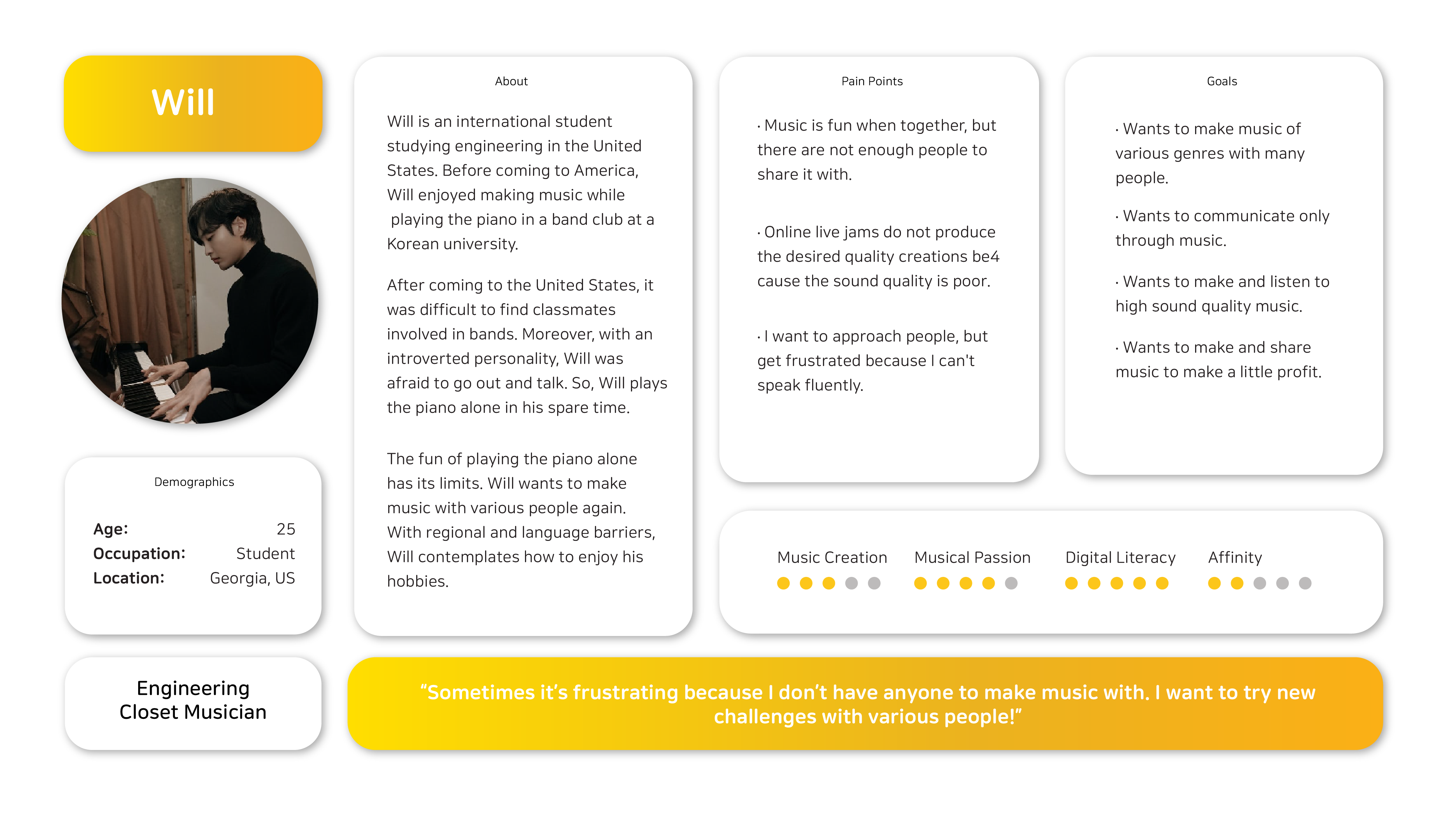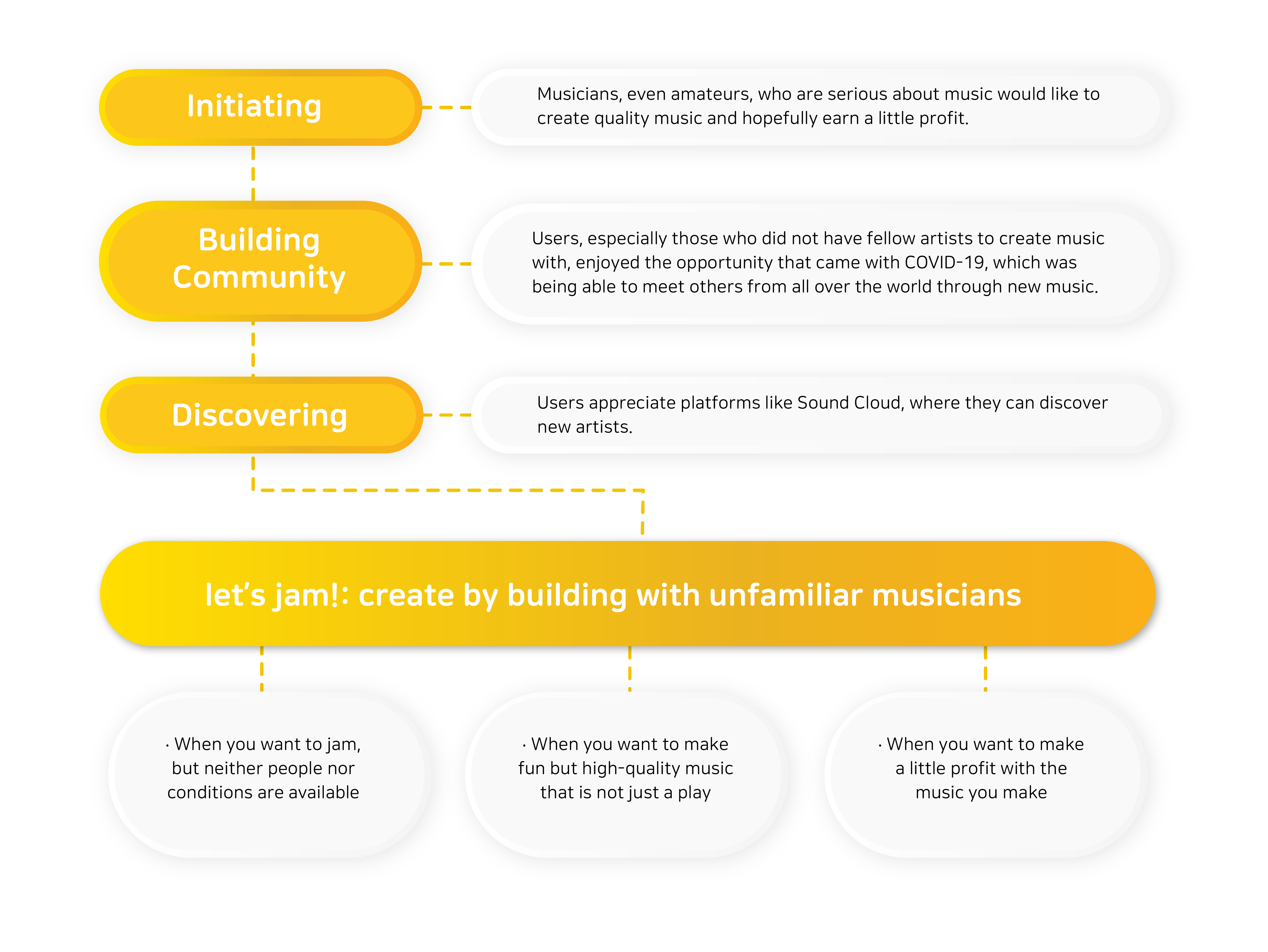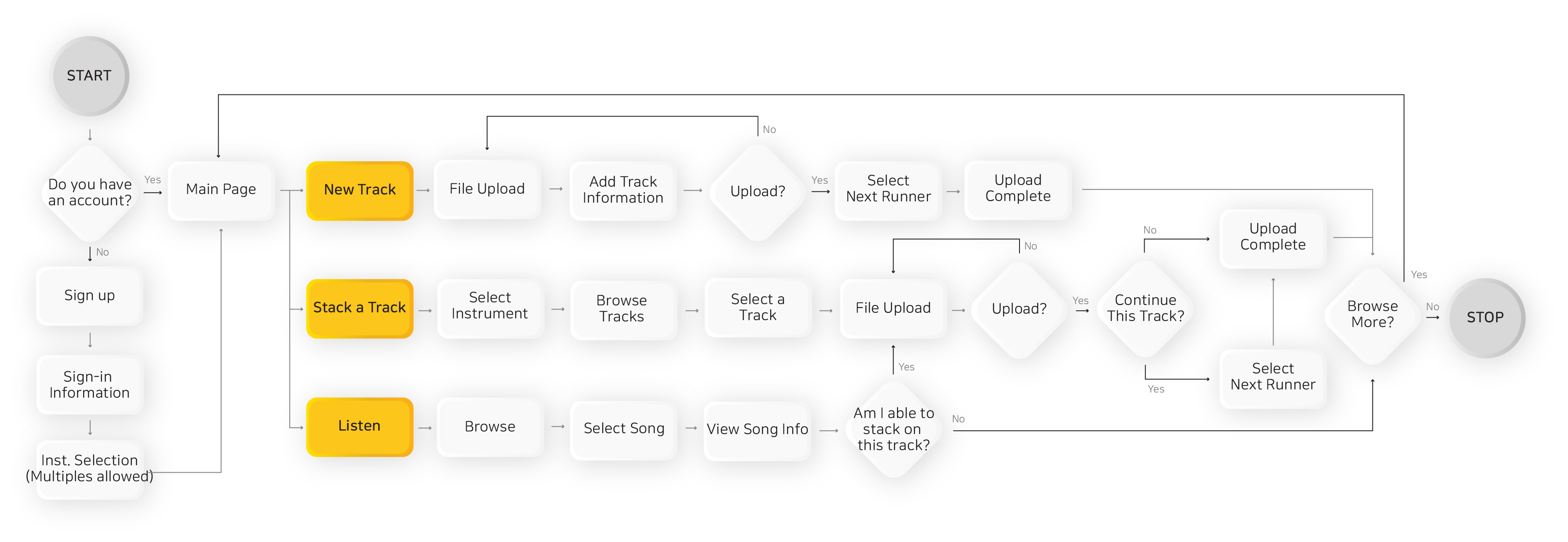February 2021 (3 weeks)
Individual Project
Music plays a very large part in an era where various contents are utilized. With the advent of the post COVID-19 era, musicians, pro and amateurs, have become to desire to release their creative outlet without physically meeting, as that has become almost impossible. Additionally, the digital transformation of getting used to remote environments and various non-face-to-face services is accelerating.

Application encouraging remote methods of creating and stacking music.
Honey Jam is a service for musicians where they stack specific tracks on top of
each other to create diverse music and monetize the music made.

According to Youtube, music ranks the 2nd most consumed content in the world. Additionally with the outbreak of COVID-19, the concept or online ensembles have emerged.


Live Music
With the outbreak of COVID-19, the way people interact, along with sharing music,
has shifted to an online form. Through streaming platforms like Youtube or Twitch, streamers create live jamming
sessions with a Japanese recording program called Syncroom.
What they lack: Due to this being a live stream, the quality of sound is compromised
and the profit is given to the streamers, not the musicians. The Syncroom program is also only in Japanese,
so it lacks accessibility to those who do not know Japanese.

Duet Culture
Others utilize the idea of “duet”, where users download a video,
stack their own video next to the original video, and upload it as their content.
This phenomenon can also be seen in platforms like TikTok and instagram stories.
What they lack: These platforms are also ambiguous since there are a lot more
videos aside from music-related, it is hard for musicians to find each other.
For the user interviews, I talked to musicians, ranging from amateur to semi-pro musicians, and TikTok or youtube users who are interested in listening and making music.
Based on user interviews, a persona was made to represent the target users.




Become the user!
As I had little knowledge about this culture,
I was stumped on recognizing the pain points. One suggestion from a
peer that really helped to going through with this project was to
become to user myself.I immersed myself into the music creation
culture by attending a live stream, searching through artists in
Sound Cloud, and actually “duet” a video on TikTok myself.
As a result, I was able to better understand some of the problems
the users were having with the existing platforms.
You are not the solver of all problems.
At first, I tried to include everyone in the process.
As a result, I was steering away from the focus and coming up with
UI’s that was hard to recognize. However, realizing that I am not,
and should not, be creating an “all-in-one” solution,
I took a step back and re-examined my goals. By getting rid of the
burden that this design should solve ALL problems,
I was able to pin down on what was important for my focus users,
musicians in this case.